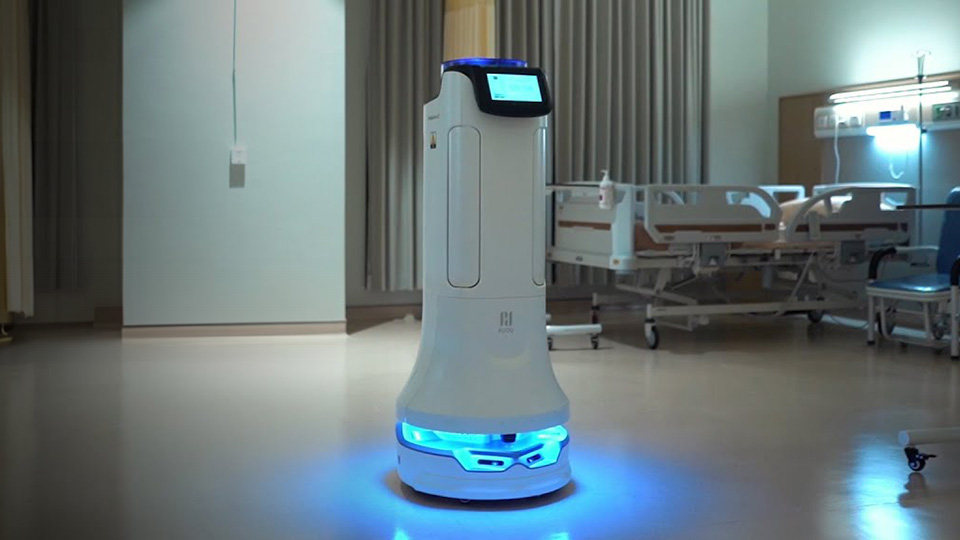Autonomous mobile robots can be used for various tasks within hospitals to help optimize operations and reduce staff workload. They can be employed in patient guidance, reception, information services, or object transport operations and can be integrated with hospital software.

In-hospital application areas:
Autonomous mobile robots can be used to safely transport sterile materials, medications, samples, and other medical supplies between different departments. This allows staff to focus on more critical tasks.
In hospitals, autonomous robots can be used for meal service. These robots can deliver meals to patient rooms, transport food, and maintain hygiene standards throughout the process.
Autonomous robots can be used to perform cleaning and disinfection tasks within hospitals. Cleaning robots can be especially important for maintaining hygiene standards in sensitive areas such as intensive care units and surgical rooms.
Laboratory samples can be collected within the hospital by autonomous robots and safely delivered to the relevant laboratories. This ensures fast and reliable sample management.
Autonomous robots can be used to deliver medications to patients in accurate doses. This can reduce errors and make the medication delivery process safer.
They can serve in consultation and guidance roles for patients or their relatives in the hospital.
Hospital software that can be integrated:
Autonomous robots can integrate with these systems, including patient medical history, treatment plans, and doctor notes, to personalize patient care and communicate more effectively with doctors.
Autonomous robots can monitor patient vital signs and other important tracking data, integrating this information with relevant software. This allows healthcare professionals to access real-time information about the patient’s condition.
Robots can integrate material handling and inventory management tasks with the warehouse management system. This allows for more effective tracking and management of materials within the warehouse.
Autonomous robots can integrate patients’ appointments, visit times, and other scheduling information into the appointment management system, allowing for better coordination of operations.
Robots can integrate medication transport and distribution tasks with the medication management system. This makes medication management safer and error-free.







